|
|
|
|
 How to link multiple AT PSU's into one BIG PSU. How to link multiple AT PSU's into one BIG PSU.
|
|
Date Posted: Apr 1 2001
|
|
Author: OnDaEdg
|
|
|
|
|
Posting Type: Article
|
|
Category: Electronics
|
|
Page: 1 of 2
|
|
Article Rank:No Rank Yet
Must Log In to Rank This Article
|
|
|
|
|
Note: This is a legacy article, imported from old code. Due to this some items on the page may not function as expected. Links, Colors, and some images may not be set correctly.
|
|
|
How to link multiple AT PSU's into one BIG PSU. By: OnDaEdg
|
|
How to Run 2, 4, or even 10 (AT) Power Supplies In Parallel or Series at 5, 12, 18, or 24 Volts!
|
|
|
|
|
|
|
|
|
|
|
As most of you who frequently visit the irc Pro/Chat room know, I traded in my Intel loyalties and picked up an AMD system. I picked up through a stroke of luck an AXIA 1.2gig TBird that is an amazing overclocker along with a KT7A. I had heard that these chips run hot, but had not witnessed it myself. So I threw on a fairly big heatsink and fan, fired up Prime95, and let it run for twenty minutes. After twenty minutes, I checked the temp and it said 138 degrees F! Wow. Using this same heatsink and fan, my Intel at 1 gig wouldn't go over 103 F.
So, if these new AMD chips are running so hot, just how powerful of a peltier will I need? In my opinion, if you are going to be cooling a TBird over one gigahertz, nothing less than a 120 watt peltier should be used. Period. Personally, I think that is still a bit on the small side for what I want to do with it. After searching the web, I found that the 172 watt peltier supplied by TE Distributing is the best one for the job. The only problem is that this peltier requires double the voltage that most other peltiers require. To achieve its maximum wattage potential, it has to be run near 24 volts. Well, I guess its time to find a 24 volt power supply. So I hit Ebay and found one for 40.00 . I received it the following week. I threw a multi meter on it and found that the 24 volt output on it was dead. Great, just my luck. I decided that there has to be a better way to do this. The first place I looked for information on how to come about finding a 24 volt power supply was amateur radio web sites. Although they typically use high current 12 volt power supplies, I figured there would be some information on one of the sites on how to construct your own power supply. What I found was even better. I came across an electrical engineer named August Hoecker who had found a way to take cheap pc (AT) power supplies and run two or even MORE in parallel or series. The word on the net in the overclocking community was that this was impossible to do. Well, it's not and the modifications to get this to work are extremely simple even for a person with limited experience using electronics. So with the extremely detailed directions given to me by August, I was able to create my own 500 watt power supply using two used $5.00 AT power supplies I had picked up from a local shop. Now I know a lot of you overclocking nuts are planning on using multiple 150+ watt peltiers in your rigs, but don't have the power to do it. Well, here's your answer!
First, as always, we have to assemble the required tools and parts. Here is what we need:
Two 250 watt or bigger AT power supplies (preferably identical)..
A multimeter. (extremely important and handy to have! I got mine at Radio Shack for like ten or twenty bucks)
Wire strippers, electrical tape, couple of feet of wire, (two )1 or 2 ohm 25 watt load resistors (Mouser electronics has these),
|
|
|
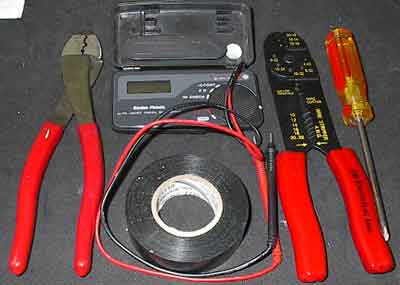 |
|
|
|
Here is a pic of the two AT power supplies I picked up:
|
|
|
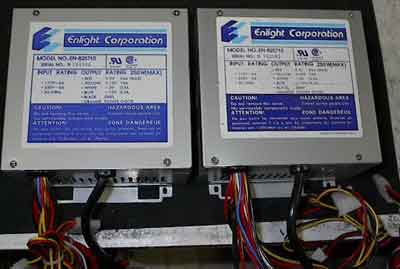 |
|
|
|
Now that we have everything we need, let's get to work. First off, I am going to give a bit of advice. Make sure they are unplugged. Also, there are high voltage capacitors inside these power supplies. DO NOT TOUCH THEM! They are in excess of 300 volts and can be very dangerous. If you are unsure as to what a capacitor is, you probably shouldn't go about attempting this modification for your safety's sake. This project is to be done at your own risk and myself or Procooling.com are not responsible for any injury or damage caused by improper use or modifications done to these supplies. I discharged these capacitors by placing a high watt/high ohm resistor across the capacitor leads.
Back to the modification. If you plan on using two supplies, you only have to perform this modification to just one of them. If you plan on running three or more in parallel or series, you will have to perform the modification to all but one. I am using two so let's get one of these things opened up. Using a small Phillips screwdriver, I remove the four screws on the top.
|
|
|
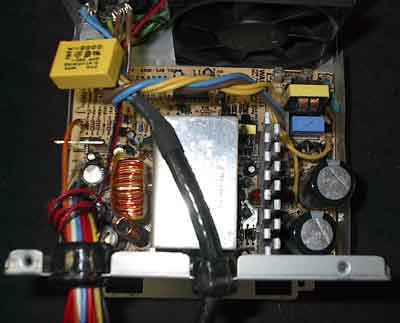 |
|
|
|
Now you can see those two capacitors on the right side that I warned you about. Be careful of them. The first and most important thing we have to determine is whether or not the negative side (black wires) are connected to case (3rd wire) ground. When I say case, I am referring to the actual metal case that the supply is sitting in. So how do we determine whether or not the negative side is connected to the case? We must perform either a continuity test (tells whether two points are connected by a conductive material) or an ohm reading using a multimeter. Either one of these tests will work Taking my multi meter, I touch one of the probes to the negative (black wires are negative) and the other probe to the case of the power supply.
|
|
|
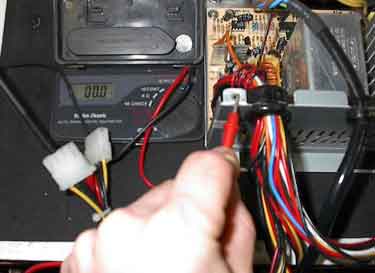 |
|
|
|
If the continuity test is positive, the multi meter will tell you (mine beeps). If you perform an ohm reading and it comes up 00.0 ohms, or very close to 0, then you have a floating ground as well. Then it is determined that the negative side is directly connected to the case. Most AT supplies within the last couple of years will more than likely have the negative connected to case. At any rate, the supplies I am using have the negative connected to case/3rd ground. Determining whether or not the negative is connected to ground is very important. This next part I am going to quote August Hoecker directly : "IF THE BLACK LEADS ARE COMMON TO CHASSIS GROUND IN THESE SUPPLIES AND YOU TRY TO CONNECT THEM IN SERIES OR PARALLEL THEY WILL SHORT OUT PERHAPS DAMAGING THE SUPPLIES!!!"
Heh, you think he was trying to tell me something ? Now that we have determined that the negative is connected directly to the case, what do we have to do to be able to run two power supplies in series or parallel? Simply, we have to insulate or cut all of the connections to chassis ground. So let's find where the negative is connected to or touching the case. In order to do this, we have to unscrew the circuit board from the case and lift it up so we can see the bottom of it. First thing we use is our eyes. What we are looking for is a place where the negative side (black wires) is connected to the case. After not spotting any wires, I found where mine was touching the case. It was touching the case directly from the bottom of the copper clad circuit board to the raised mounting holes that accept the securing screws. Take a look for yourself:
|
|
|
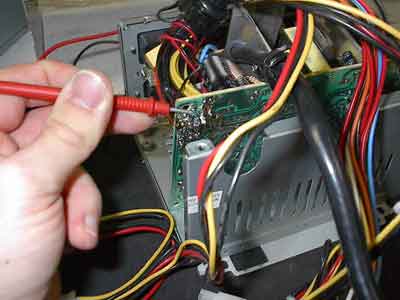 |
|
|
|
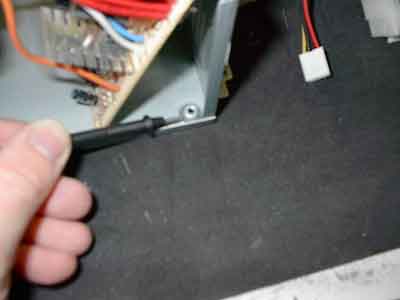 |
|
|
|
Ohhh My we are just getting started
|
|
|
|
|
|
| Random Forum Pic |
 |
| From Thread: Finnaly got my chiller working! |
|
| | ProCooling Poll: |
| So why the hell not? |
|
I agree!
|
 67% 67%
|
|
What?
|
 17% 17%
|
|
Hell NO!
|
 0% 0%
|
|
Worst Poll Ever.
|
 17% 17%
|
Total Votes:18Please Login to Vote!
|
|






 How to link multiple AT PSU's into one BIG PSU.
How to link multiple AT PSU's into one BIG PSU.





